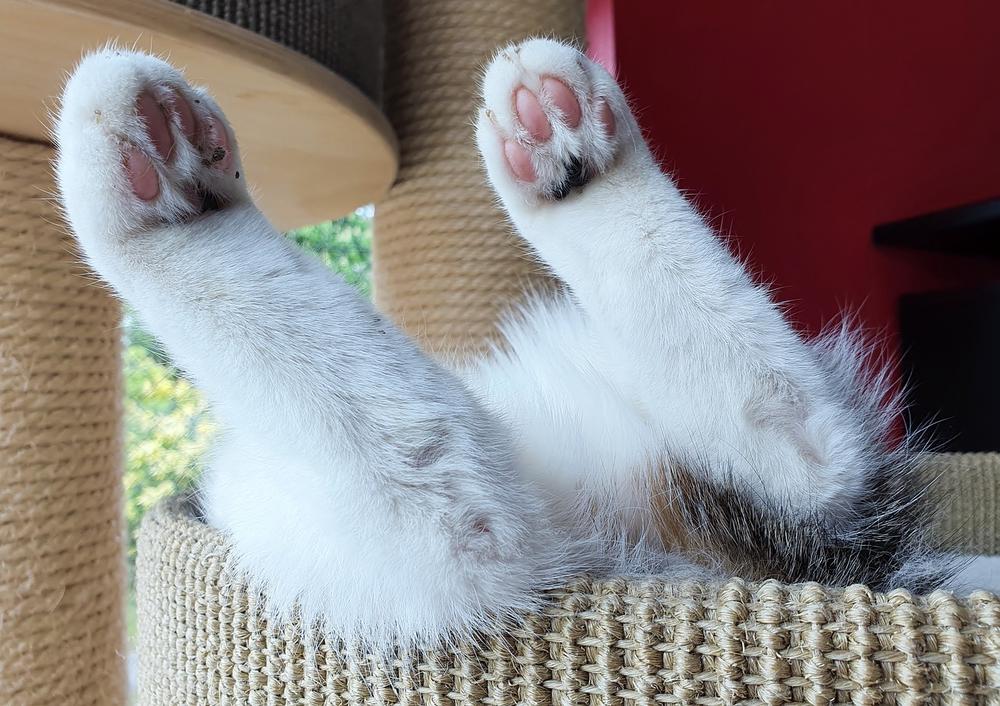How Far From Home Do Domestic Cats Roam? (The Truth)

You'll agree with me when I say:
It's a scary thought to imagine your beloved domestic cat wandering off and getting lost or injured, isn't it? 🙀
The idea of them roaming far from the comforts of home, fending for themselves in the dangerous wild, it's enough to keep any cat owner awake at night.
But don't worry, because today I'm going to put your mind at ease.
Let's dive into the fascinating world of how far our furry friends venture from home.
Shall we begin?
How Far Can a Cat Travel in One Day?
How far can a cat travel in one day?
Let me enlighten you with some intriguing details:
- Cats with a strong prey drive may travel up to 3-4 miles away from home when they go missing, driven by the chase after their next meal.
- On a weekly basis, cats have a remarkable travel capacity of up to 30 kilometers (18 miles). That's quite a long distance for our feline friends!
- On average, cats tend to cover approximately 1/8 to 1/4 mile per day, which showcases their petite and graceful movements.
- However, when cats are in the pursuit of love or food, their travel distance can expand significantly. So don't be surprised if your furry companion ventures far and wide during these times!
- Cats are known for their strong homing instinct. Even when they roam far, they often find their way back home. Don't underestimate their navigational skills! 😺
Now that you know curious facts about cats' travel abilities, keep an eye on your adventurous friend.

They might surprise you with their wanderlust and leave you wondering where they've been exploring...
Remember, cats are always full of delightful surprises, including their ability to embark on small journeys far beyond their cozy homes.
Now that you know more about how far domestic cats can travel in a day, let's dive deeper into their roaming distances and the factors that influence them.
You won't believe the fascinating differences between cats' territories and the surprising role they play in their environments!
The Nocturnal Wanderings of Cats: Territories, Ranges, and Roaming
Here's what you need to know about cats' roaming behavior:
- Some cats really love exploring big areas, while others are more homebodies like you.
- Most of the time, cats stay within 50 meters of their homes. They might wander off, but they usually come back to you.
- Cats that go outside have bigger territories than indoor cats. Male cats can roam anywhere from 2.1 to a whopping 1038 acres, while females tend to stick to around 42 acres.
- When cats roam, they're usually after two things: food and mates. They search far and wide for these important things.
- Feral cats have even larger territories, ranging from 2 to over 1000 acres. They're driven by resources and the chance to find a mate.
- Sometimes cats wander far away, but it doesn't happen very often. Most pet cats prefer staying close to home.
- It's worth noting that cats' roaming behavior also helps keep rodent populations in check. They naturally do their part as pest control experts.
Developing an understanding of how cats navigate and engage with their environment provides us with insight into their natural instincts and conduct.

And now, let me delve further into the factors that influence cats' travel behavior and how to ensure their safety...
The Factors That Affect Cat Travel
The area where your cat lives has a big impact on how far it roams from home, so let's discuss that.
Living in the countryside gives your kitty more room to roam compared to urban or suburban areas.
So, what affects your cat's travel?
Well, there are a few factors to consider.
First is their prey drive. Some cats just can't resist chasing after birds, mice, or squirrels, which can make them wander further and lose awareness of their surroundings.
Now, let me fill you in on something interesting about gender.
Male cats tend to wander farther than females because they're searching for love and potential mates.
Female cats usually stay close to home and wait for suitors to come to them.

Various obstacles like roads, fences, gates, and encounters with other critters can also affect how far your feline friend ventures.
Cats are smart creatures and pay attention to their territorial boundaries for safety.
If you want to track your outdoor cat's roaming distance, you might consider using a GPS tracker. It's a handy device that tells you how far your furball travels.
Here's an intriguing fact:
Male cats typically go about 1500 feet away from home on average.
Quite a stretch, isn't it?
However, remember that every cat is unique. The distance your whiskered companion roams depends on factors like their living environment, spaying/neutering status, food availability, and their personality.
If you're concerned about your cat's safety or simply want to keep tabs on them, a GPS tracker could be a perfect solution for peace of mind.
Stay tuned for more information on keeping your feline friend happy and safe!
Does Neutering Reduce Cat Roaming?

Neutering male cats cuts down their urge to hunt for mates, making them stick around the house more often. This inclination toward staying closer to home stems from reduced roaming tendencies, the setting up of expansive territories, and a desire to avoid unplanned pregnancies. Pet cats, regularly spayed or neutered, don't require venturing outside in search of food and exhibit decreased mating behavior, which helps manage the problem of wild cat overpopulation.
How Does My Cat Claim Their Territory?
Cats love to show their territorial nature
Do you know how cats are?
They can be very possessive!
And they have some interesting ways to let you, and other cats, know that a specific area belongs to them.
One way cats claim their territory is by rubbing against objects.
You've probably seen it before - your cat brushes up against furniture, walls, even your legs!
What they're actually doing is leaving their scent behind to mark what's theirs.
It's like they're saying, "Hey, this space is mine!"
But wait, there's more!
Another tactic cats use is scratching.
By scratching on furniture or scratching posts, they not only sharpen their claws but also leave visual and scent markings. It's their way of saying, "This spot is taken, my friend!"
And here comes the surprising part...
Cats also claim territory by spraying urine.
Yes, it's true.
When cats spray urine on certain surfaces, they create a personal billboard that shouts, "Stay away...
This area belongs to me!" It might not be pleasant for us humans, but for cats, you should mark and maintain their turf.
Why territories matter so much to cats
Having their own territory is crucial for cats as it allows them access to necessary resources like food and potential mates.
Just like us humans, cats need their own space and belongings to feel comfortable and secure. When they successfully defend their territory, they become more confident and less stressed.
Managing indoor and outdoor territories
If you have an indoor cat, ensure to provide them with enough opportunities to scratch and mark their territory. Have scratching posts and toys available for them to leave their scents and showcase their ownership skills.
Now, if you happen to live in a multi-cat household, there's something else to consider.
Allocating separate territories can minimize conflicts between cats. Each cat needs their special spot where they can feel safe and in charge.
Lastly, for cats that roam the great outdoors, establishing and maintaining a territory becomes even more vital.
With other animals and objects constantly crossing their path, having a defined space helps them navigate their environment and protect what's rightfully theirs.
So, if you have an outdoor cat, ensure they have plenty of room to wander and claim as their own!
And guess what? I have written a handy blog post that addresses exactly why cats love having their noses rubbed.
So, if you're curious about this adorable feline behavior and want to find out more, I highly recommend checking out Why Does My Cat Like Her Nose Rubbed.
Trust me, you won't want to miss this insightful guide!
How to Protect My Cat
So, you're a cat owner and you want to protect your feline friend.

Well, here are some practical tips on how to ensure their safety:
- Be prepared: Get your cat microchipped, desexed, and tagged. This greatly increases the chances of a reunion if they get lost.
- Check hiding spots: Cats have a knack for finding the most obscure places to hide. So, check under bushes, in garages, and behind furniture if your cat goes missing.
- Create familiarity: Leave out canned cat food with a strong odor or place their litter box and bedding outside. These familiar scents can attract lost cats back home.
- Consider a GPS tracker: Utilize a GPS cat tracker to keep tabs on your furry friend's whereabouts. This will give you real-time information and help locate them if they wander too far.
- Keep vaccinations up to date: Regular vaccinations protect your cat from diseases and minimize health risks.
- Indoor enrichment: If you've chosen to keep your cat indoors for safety reasons, provide plenty of enrichment activities such as toys, scratching posts, and interactive play sessions.
Taking these steps will give you peace of mind knowing that you've done everything possible to protect your beloved pet.
Last word
Key Takeaways:
- A missing cat will usually end up about 3-4 miles away from home.
- Cats can travel up to 30 kilometers (18 miles) every week.
- Cats spend around 79 percent of their time within 50 meters of their owners' homes.
- Female cats have smaller territories than males and tend to stay closer to home.
- Male cats usually have larger territories ranging from 2.1 to 1038 acres.
- Food availability and the search for mates influence a cat's territory.
- Feral cats' travels are guided by resources and potential mates.
- Cats with a strong prey drive may stray further from home.
- A GPS tracker can help determine how far an outdoor cat travels.
- Neutered male cats are less likely to roam far distances or engage in unwanted pregnancies.
- Maintaining a territory is crucial for cats' access to food and mates.
- Cats frequently hide in difficult-to-find spots when lost.
- Microchipping, desexing, and tagging cats ensure their safety while roaming.
- Cats can find their way home even after being lost for a long time.
- Using canned cat food or placing their litter box and bedding outside can attract lost cats back home.
And that wraps up today's article.
If you wish to read more of my useful articles, I recommend you check out some of these: Can Cats Find Their Way Home After Rain, Why Your Cat Is Scared of the Ceiling Fan, Will My Cat Jump Off the Balcony, Do Male Cats Recognize Their Kittens, and Why Do Cats Like Keyboards
Talk soon,
-Sarah Davis